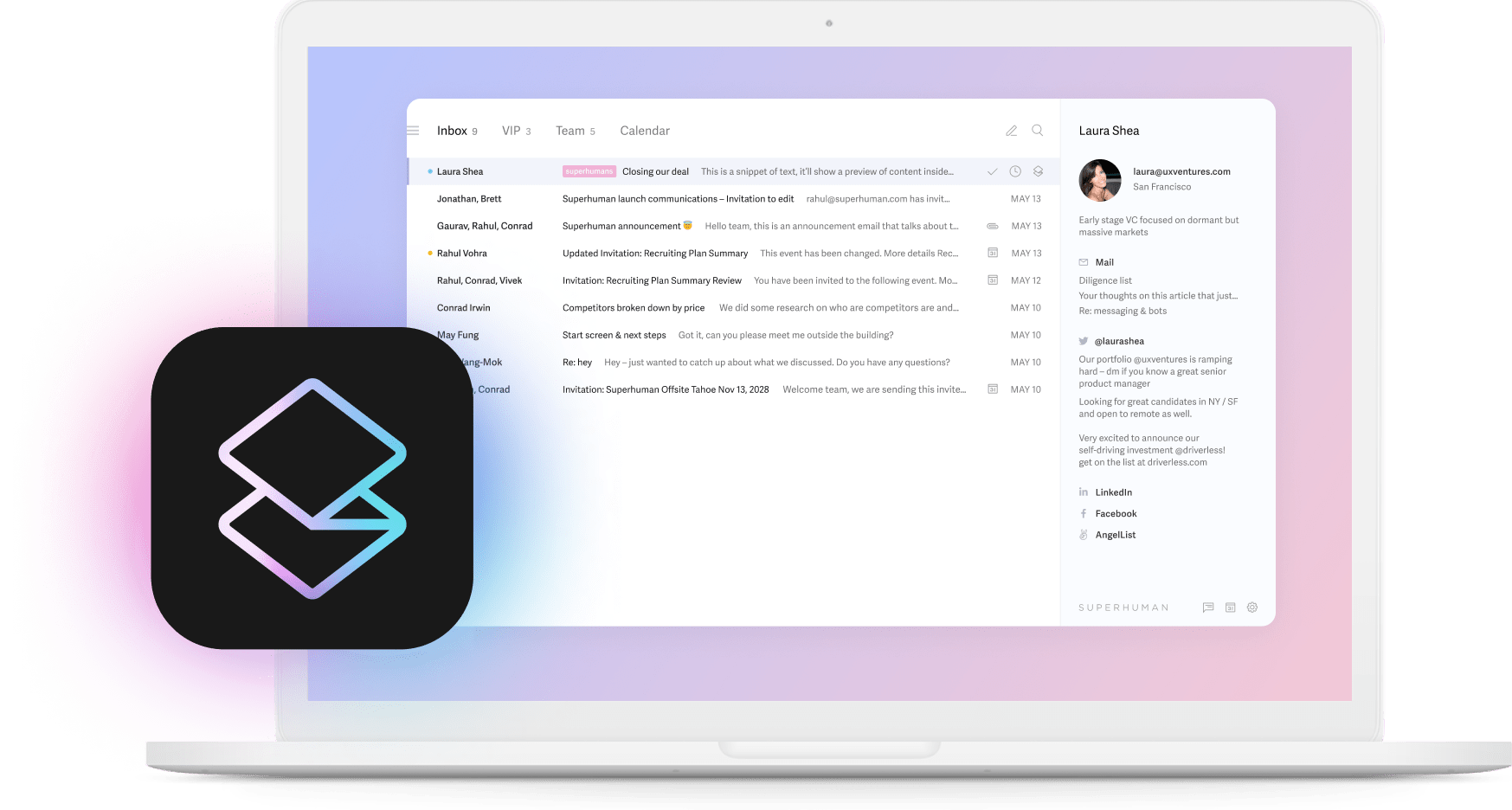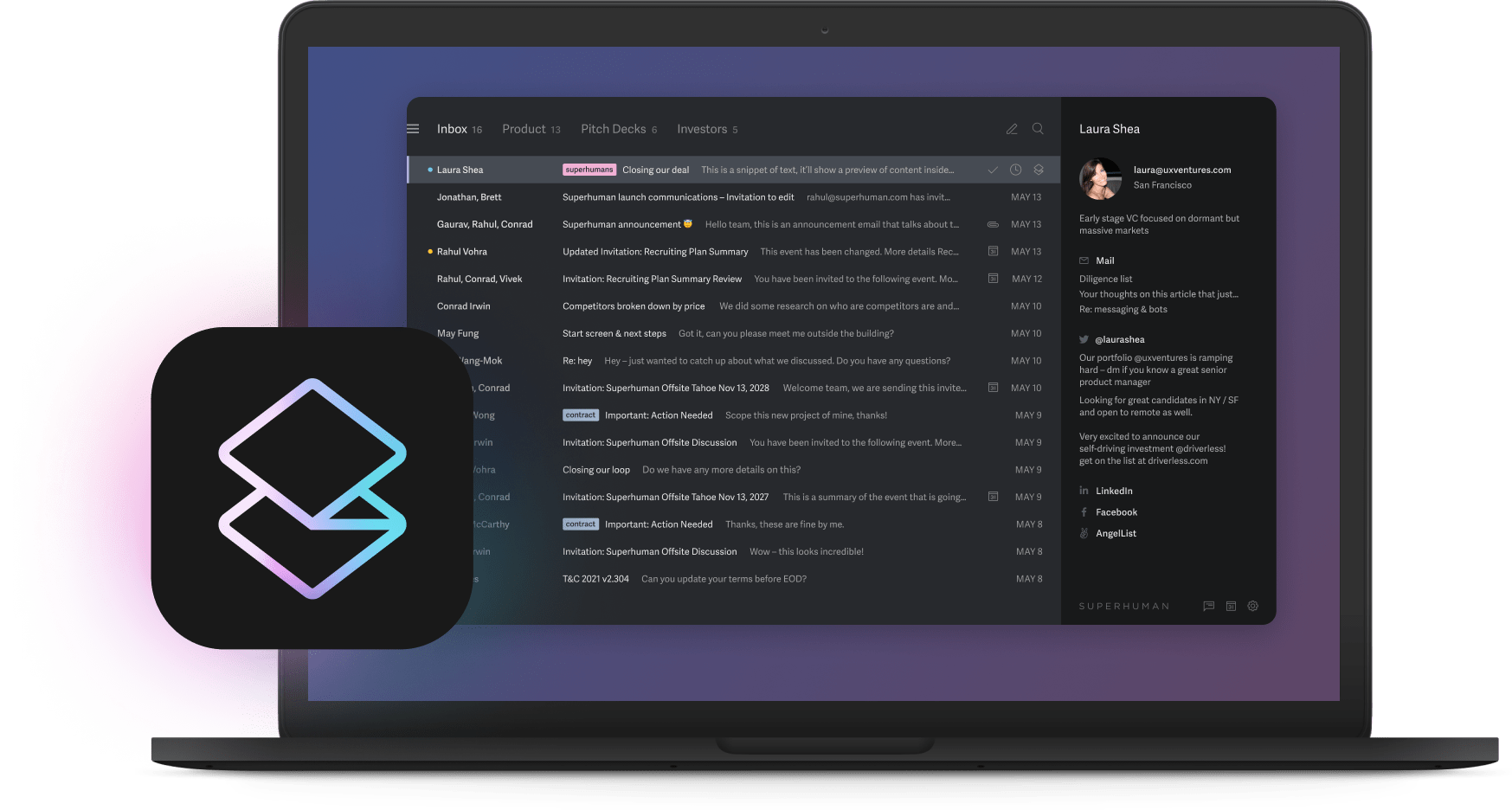
Busy leaders using AI-native tools like Superhuman Mail save 4 hours every week, while the rest of the company struggles with manual workflows. This productivity gap goes beyond individual hustle, it reflects something deeper. Firm-level readiness determines who pulls ahead and who gets left behind as artificial intelligence reshapes how work gets done.
Organizational readiness means your company's capacity to adopt, integrate, and scale machine learning across every workflow. The AI Readiness Index reveals only a small group of "Pacesetters" have the strategy, data, and infrastructure to capitalize on intelligent systems. Everyone else risks falling behind while their competitors fly through their inboxes and automate routine tasks.
What is AI readiness at firm level?
AI readiness at firm level refers to an organization's comprehensive capacity to adopt, integrate, and scale artificial intelligence technologies across all workflows and operations.
This readiness encompasses five fundamental components: technical infrastructure capable of running modern AI models, high-quality and well-governed data systems, a workforce skilled in intelligent tools, committed leadership, and clear strategic alignment with business objectives.
When these elements function cohesively, AI transitions from experimental pilot projects to systematic operational advantage.
Several frameworks help measure this maturity:
- The Cisco AI Readiness Index grades companies across strategy, infrastructure, data, talent, security, and governance
- The Lumenalta checklist offers practical milestones for each area
- Nexla's guidance shows why leadership needs to link intelligent automation projects directly to business KPIs
The payoff for firm-level readiness is significant. Isolated tool adoption might boost a few individual performers, but integrated readiness raises productivity across every team and keeps your entire company competitive as intelligent automation capabilities accelerate.
Why AI readiness matters now
Without firm-level readiness, you're pouring time and money into projects that never leave the lab while faster competitors speed ahead with automated workflows and intelligent decision-making.
The data tells the story clearly. Only 13% of companies have the infrastructure their automation ambitions demand. Without that foundation, 70% of initiatives stall before reaching production. The gap grows wider each quarter, showing up as missed automation opportunities, slow decision-making, and frustrated teams expecting quick wins.
Inside your company, readiness determines whether intelligent tools elevate everyone or create a two-tier workforce. Early adopters download automation apps independently, streamline inbox triage, and finish projects sooner.
Colleagues without the same tools watch deadlines tighten while manual tasks pile up. Over time, this imbalance fuels turnover and erodes culture as top performers seek more technologically advanced environments.
Key components of AI readiness
Sustainable automation success rests on five pillars. When each pillar is strong, you can move from isolated pilots to enterprise-wide impact.
Leadership and strategy
Intelligent automation initiatives succeed only when leaders set a clear vision, tie projects to business goals, and stay accountable for results. An automation vision aligned with business objectives keeps experimentation from turning into vanity projects.
Cross-functional governance boards give every team a voice while maintaining executive ownership. Budgeting for training and tools signals real commitment and removes barriers to scale.
Technical infrastructure
Machine learning workloads quickly outgrow traditional IT systems. Readiness starts with scalable compute, high-quality data pipelines, and strong security controls. Choose platforms built for intelligent automation that plug into your stack rather than bolt-on tools that add latency and risk.
Workforce readiness
Tools don't create value, people do. A skills audit reveals gaps in data literacy, model governance, and prompt design. Ongoing upskilling programs help every role understand where automation augments their work. Recruiting specialists in data science and MLOps rounds out the talent mix and speeds up deployment.
Change management
Even the best model fails if no one uses it. Clear adoption metrics, regular progress reviews, and a champions network turn early wins into momentum. Effective change management stresses transparent communication about how intelligent tools augment jobs, not replace them. Sharing quick wins reduces resistance and builds trust across teams.
Process integration
Start where employees already spend the most time. Email, calendar, and messaging consume more than half of a typical workweek, yet they're often ignored in automation roadmaps. Embedding intelligence into these daily tools produces immediate gains and supplies the usage data needed for continuous improvement.
Measure outcomes like response time, throughput, and hours saved rather than raw usage. Readiness assessments keep focus on high-impact workflows and stop pilots from becoming dead ends.
Strengthen each pillar, and your organization moves from isolated wins to systemic, compounding advantage.
Assessing your firm's AI readiness
Before you invest another dollar in automation, map where you stand today. A quick scan tells you whether small tweaks or a full reboot is needed.
Current state analysis
Start with a structured review that covers people, process, and technology in one sweep.
Run an executive survey using the Cisco index. Its scorecard grades strategy, infrastructure, data, talent, security, and governance, then places you on a four-stage maturity curve from Pacesetter to Laggard.
Inventory your tech stack against the 11 checkpoints in the Lumenalta framework. Pay special attention to compute capacity, integration flexibility, and monitoring capabilities that enable intelligent automation at scale.
Benchmark strategy alignment by counting business units with written automation objectives linked to revenue or cost targets. Anything below 50% suggests machine learning is still a side project rather than core strategy.
Capture baseline productivity metrics now. Track average cycle time for key workflows, time spent in email and meetings each week, and ticket backlogs. These numbers become your proof of progress later.
Readiness indicators
A few signals tell you if real change is within reach.
Positive signs include:
- Senior leaders using intelligent tools daily and talking openly about the wins
- Clear KPIs track time saved, error rates, or revenue uplift from automation
- Budget lines exist for platforms and workforce training
- Cross-functional teams meet regularly to review results and risks
Warning signs emerge when:
- Automation sits only with IT or an "innovation lab," far from daily operations
- Pilots end without rollout plans or funding for phase two
- Middle leadership blocks new tooling in the name of "focus"
- Disconnected systems force manual exports and copy-pasting between applications
When positives outweigh warnings, you're ready to scale. If not, pause and shore up the gaps first.
Competitive benchmarking
Internal scores mean little without an external yardstick. Compare your maturity rating to direct rivals and to sector leaders. Pay special attention to communication workflows where firms often unlock disproportionate gains by replacing default email clients with intelligent alternatives.
The goal is simple: spot where competitors have moved first, then decide whether to match or leapfrog. Armed with a clear baseline, visible indicators, and a live view of the market, you can prioritize the investments that close the gap fastest.
Real-world examples: How companies build AI readiness
Building readiness isn't about launching massive transformation projects. Smart companies focus on daily tasks, strong leadership support, and platforms built for intelligence to turn readiness from theory into real results.
Start with core workflows
You spend most of your day in communication tools, so smart teams begin there. Email, messaging, and calendars deliver the fastest return because they touch every role and generate immediate productivity data. When you embed automation in these workflows, you avoid lengthy change programs and give employees quick wins that build momentum for bigger initiatives.
Go Nimbly
Go Nimbly, a revenue operations consultancy, demonstrates how AI-native tools drive firm-wide adoption. CEO Jen Igartua explains their challenge: "I want my team to be motivated, growing, and progressing their career. You can't do your best work without the right tools." By implementing Superhuman Mail across their team, Go Nimbly enabled consistent AI usage for email drafting, prioritization, and follow-ups without requiring separate training programs. The result: faster client responsiveness and streamlined internal communication that scales with company growth.
Rilla
Rilla, an AI-powered conversation intelligence platform, needed to maintain communication quality while scaling rapidly. As they expanded from startup to growth stage, their team faced increasing email volume that threatened responsiveness. With Superhuman Mail embedded directly in their workflow, Rilla's team maintains speed and quality while handling increased volume, proving that the right infrastructure enables growth without proportional headcount increases.
Brex
Brex exemplifies leadership-driven adoption. When executives use Superhuman Mail themselves, it signals organizational commitment and accelerates team-wide adoption. Brex leadership recognized that modeling behavior matters more than mandates, demonstrating that firm-level readiness starts at the top and cascades throughout the organization.
Common success patterns
Industry analysis reveals winning habits among top-performing companies:
- They target high-frequency tasks first, then scale outward once value is proven
- Leadership stays visibly involved, when executives use the same intelligent tools, adoption accelerates across the organization
- They choose platforms built for automation that fit into existing systems, eliminating unnecessary friction
- Most importantly, they track outcomes that matter: response times, throughput, and hours saved, not vanity metrics
Follow these patterns and you give every team member the same edge early adopters already enjoy, closing the productivity gap before it widens.
Building your AI readiness strategy
The fastest way to turn automation ambition into real productivity is following a clear roadmap:
Step 1: Identify high-impact starting points
Start with a time audit. Most teams spend the bulk of their day in email, messaging, and calendar tools, making these workflows perfect testbeds. Map each task against proven checkpoints to spot quick wins and data gaps. Choose platforms built for intelligence that work inside existing tools so habits stay intact while you unlock faster gains.
Step 2: Secure leadership buy-in
Automation stalls when vision stays trapped in the IT corner. Share external benchmarks to show where your firm stands and where competitors are heading. Then get senior leaders using the same intelligent tools first. Their visible adoption sets the tone, aligns budget, and clears process roadblocks for everyone else.
Step 3: Choose integrated solutions
Evaluate options carefully. Confirm the tool fits your existing stack, check your team's skills and support needs, and assess compliance requirements. Platforms that learn from daily usage and connect through open APIs future-proof your investment.
Step 4: Measure and scale
Define success before you launch. Track model deployment time, uptime, and error rate, three KPIs that matter most for generative automation success. Pair these with business metrics like time saved per employee. When dashboards show consistent wins, roll the tool to adjacent teams and automate reporting so progress stays visible.
Step 5: Maintain momentum
Readiness keeps moving as capabilities advance. Schedule quarterly reassessments against proven frameworks and refresh training so skills keep pace with new features. Continuous monitoring catches problems early and protects your gains. Keep sharing wins, and your automation program will keep compounding value long after the first launch.
How to implement AI readiness at your firm
Companies that invest in readiness unlock top-performer productivity for every employee, closing the gap between scattered experimentation and organization-wide acceleration.
Those that hesitate will watch performance disparities widen as competitors surge ahead with intelligent workflows. By embedding automation directly into your core communication tools today, starting with email, you capture those gains before rivals even begin to catch up.
Ready to build readiness where it matters most? Superhuman Mail helps teams save 4 hours every week with intelligence built directly into email. Start your free trial →






